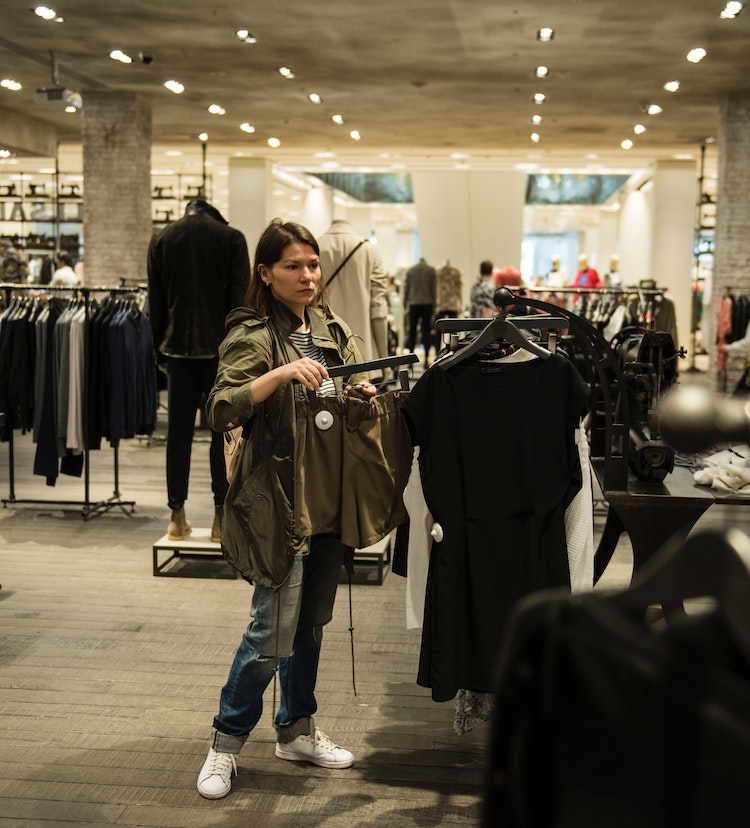How much does your outfit cost? Really?
Is it the total on the receipt? Is it the amount of greenhouse gases emitted? Is it in the amount of waste that hits the landfill? Is it in the years to reclaim polluted waterways? Is it in the humiliations and desperations of the sweatshop worker? How are we going to count the cost of your outfit - and then, who pays that bill?
Over the past decade, the success of global fashion superpowers like Zara and H&M have created a finely tuned machine that can take a creative concept from the runway to retail in mere weeks at an appealingly low price. In 1950, ordering a ready-to-wear dress from a catalogue cost approximately $9, or $72 in today’s prices (and you would wait a few weeks for delivery). Picking up a dress at a fast fashion outlet H&M can cost you about $30, and exists in a world of two-day, free delivery. Offshore textile manufacturing, global supply chains and ongoing, downward price pressures have given us runway trends for the masses - but this consumerism comes at a price.
Fashion touches an impressive number of industries. In a pair of Aisle undies, there is organic cotton, Tencel and recycled polyester, which draw from three different sources: agriculture, forestry and petroleum, as well as plastic recycling, since the polyester we use in the underwear is recycled. It also is a vector for as many troublesome ecological and social impacts, including exploitative labour practices, climate change, waste and toxic runoff. It’s an area ripe for change, particularly since, like food, clothing is something that we all need and use. We need to evaluate fashion as a human need, not just as a consumer good.
Fast fashion is killing our planet, thanks to processes that bring us our clothing faster and cheaper than ever before. The environmental impacts of fashion are well-documented, and horrifying. It takes 80 years for clothes to break down in landfills. 190,000 tons of microplastics enter the oceans every year from the laundering of synthetic fibers. Cotton production can devastate natural aquifers, requiring 700 gallons of water to make a single t-shirt. 20% of industrial water pollution comes from garment dyeing.
In 2020, Aisle undertook a life-cycle analysis of its production to better understand the impacts of our work, which allowed us to not only meaningfully quantify the impact of the switch to reusables, but empowers us to make better decisions around our practices. For example, we found that the biggest climate impact from our products would come from shipping and post-purchase care. This is why Aisle uses sea shipping (so, if we’re out of stock, please be patient) and encourages line-drying your Aisle products when possible. We’re also exploring ways to support more sustainable practices, such as partnering with factories that have their own sustainability goals and evaluating new textiles that not only limit harm, but restore ecological balance. We also use third party certification where possible.
There is also the social price tag. Garment workers are often poorly paid, work long hours in unsafe, unsanitary conditions, and are often subjected to physical and sexual violence. Fashion has a history of violence. From the enslaved Black people who worked on cotton plantations in the American South, to the immigrant seamstresses who died in garment fires in New York City, to sweatshop workers who died in the 2013 Dhaka garment factory collapse, workers have been put in positions of dehumanization and death. Fast fashion creates an environment that discourages reform.
Aisle maintains a rigorous vendor compliance process, and personally visit our factories to ensure compliance with our standards of care. We can, and have, stopped working with suppliers we have found to be unethical. We have higher prices than many of our competitors, but we also ensure that we work with factories that provide living wages, benefits and maternity leave.
Aisle, as a small business, does not always have the capacity to influence things the way we like. We are admirers of the slow fashion industry. Slow fashion - the purchase of quality pieces made ethically with sustainable materials - is a growing movement in response to the ecological and social impacts of fast fashion. However, we also have to talk about the real accessibility of sustainable fashion - it comes with a price tag. Sustainable fashion’s cost can be a difficult pill to swallow, and blithely telling folks to “save up and buy less” can be unrealistic and insulting. Economic inequality is a fact of life in wealthy countries too. Furthermore, although this is improving by the day, not every size is represented carefully and comfortably in sustainable fashion.
So, what’s the answer? Unfortunately, there is no easy solution. However, start by divesting yourself from fast fashion as best you can. If you find yourself shopping mindlessly, consider whether you really need that garment and consider other strategies, such as thrifting. Learn how to take care of your clothes and mend what you can to extend the life of your garments. If you extend the life and use of your garments, you can make a big difference in the sustainability of your wardrobe.
Ask retailers and manufacturers to disclose their sustainability plans, and consider it in the context of progress, not perfection. Research sustainability claims and push back against greenwashing. Support legislation that pushes back on climate change and supports labour rights. Commit yourself to small changes, day by day. It can all add up to a lot more than you think.
Photo by Juli Kosolapova on Unsplash


























